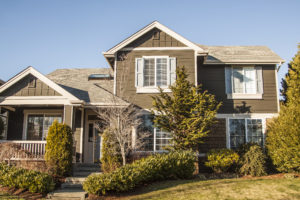 Most homeowners are looking for a few specific things when they are shopping for a new home. These might include the location of the home, the square footage, and the cost of improvements, if there are any that need to be performed. Something prospective homeowners should also consider is the landscaping.
Most homeowners are looking for a few specific things when they are shopping for a new home. These might include the location of the home, the square footage, and the cost of improvements, if there are any that need to be performed. Something prospective homeowners should also consider is the landscaping.
Whether you’re looking to purchase a home, sell your home, or to just make general improvements to the exterior aesthetics of your property, research is crucial before choosing your trees and shrubbery.
Trees are a welcome addition to any property. They provide much-needed shade to keep heating and cooling costs down as well as an exterior sound barrier against the outside world. Recently in Jacksonville, Florida, homeowners have complained of a church that backs up to their community that plays their music excessively loud. In an attempt to placate the homeowners, the church has planted trees as a natural sound barrier.
Even if you’re not trying to keep the sound in or keep the sound out, there are some things you should know before you plant.
Know Your Neighborhood
If your neighborhood is filled mostly with pine and fir trees, chances are a palm tree is going to stand out. While it may seem like a great idea, creating an eye-popping attraction to your home may not have the desired effect. Instead, travel down your street and look at your neighborhood for the types of trees that are grown to maturity. Those are the trees that do well in your climate and in your neighborhood. Create a landscaped environment that blends in and creates a cohesive look with the rest of your neighbors.
Know Your Supplier
More often than not your local arborist will know which trees will thrive and do well in your local environment. In some tropical locales, certain trees are banned because they are wildly invasive, and still others will fail to thrive because of the soil acidity or an aversion to heat. A knowledgeable arborist can save you time and potential fines by eliminating the types of trees that do not grow well, or which are prohibited in your area.
Know the Climate
Trees are living organisms and, as such, need tender care. Certain species of trees do better in hotter climates and some do better in wetter climates. The Douglas Fir tree, for example, is native to the Pacific Northwest and is among the tallest trees in the world. It has been used extensively in reforestation plans by timber companies, and remains one of the most iconic trees in the Pacific Northwest. It does well in wetter, cooler climates.
Additionally, the palm tree thrives in a hot climate. A palm tree would look out of place in the Pacific Northwest and would not grow well if planted in such a rainy climate. If you choose to plant a tree that is not native to the area, you run the risk of spending time, money, and valuable resources for a tree that may end up dying, no matter how much care you give to it.
Maintaining a tree is not excessively costly. Beyond the cost of the actual tree, the mulch, and the fertilizer, trees require that which nature usually provides. Rain and sunshine are the things that a tree needs most. If you choose the right tree for your climate and neighborhood you will be investing in a living organism that will create shade, a sound barrier for your home, and improve the resale value of your property for years to come.
This article was written by Andre Hickson, a home contractor, landscaping project manager, and self-described DIY-enthusiast. Andre hopes to help readers with great ideas for home renovation projects, and suggests researching professionals in the industry like those at Bio Landscape.
The Importance of Trees in Landscaping
No comments:
Post a Comment